We’ve been testing various prepping memes, like turning oranges into candles and using Doritos to start fires. Around this time of year we often see people share memes about using tealight candles and a terracotta pot to craft a DIY heater.
So we built a couple of different versions ourselves and measured the results.
Yes, you can get a surprising amount of heat from this setup. But it doesn’t work the way some think it does. The same amount of heat is coming out of the candles whether there’s a pot above them or not, so it’s not that you’re ‘making the candle hotter.’
Instead, by concentrating the heat into a small area using a material like terracotta that can hold and radiate heat, you can get enough warmth in a small area (very small) to keep yourself alive — but you won’t be heating up a normal room in your house.
This can work when you want to heat a “personal” amount of space, such as a tent, under a tarp shelter, in a closet or small bathroom, or in a vehicle that’s stuck overnight in winter.
But that small amount of heat comes with big risks. Open-flame candles are already one of the leading causes of house fires. And now you’re creating a potential unstable setup by stacking things on top of each other, etc etc. The wax itself can even reach its flash point — see below for videos of someone burning down their boat this way.
So this is a neat hack to know about, but not something you should choose to rely on. For preparing ahead of time, get a proper portable space heater or candle lantern instead.
Summary:
- Four tealight candles got the exterior of a terracotta pot up to 270°F (132°C), while a single candle got it up to 127°F (53°C).
- It would take nearly 60 candles to effectively heat a 100-square-foot room.
- You could boil water or even cook directly on the terracotta this way.
- Heat is not “amplified” with these devices, only concentrated.
- But that concentrated heat also comes with meaningful dangers.
- That concentrated heat can be enough to warm small spaces.
- So shrink your shelter space instead of expanding your candles.
More: Best emergency candles
The theory
There are several ways to make a terracotta heater. The basic method is to use a couple of bricks to elevate a terracotta pot, place a few tealight candles under the pot, and light the candles.
There are a couple of suggested theories for why this should work. One is that the terracotta pot(s) and the optional bolt somehow amplify the heat from the tealight candles. This is literally impossible, as it violates the first two rules of thermodynamics. Things don’t just magically get hotter without adding extra inputs.
A more realistic theory of the terracotta heater’s operation is that it concentrates the heat from the candles into a smaller space instead of just spreading that energy around the room.
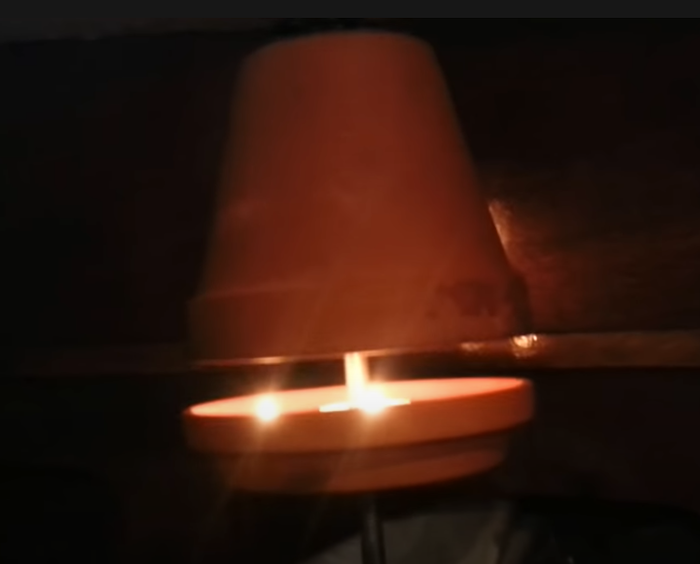
You might see other variations of building these heaters, such as sticking a smaller pot in the big pot and adding a metal bolt in the center — but you shouldn’t do that, since those kinds of bolts are often galvanized, and galvanized metal gives off toxic zinc fumes when heated.
The math behind candle heat
Can a candle heat an entire room? If not, how many candles would it take? Thankfully, we can do some math to find out. Heat is measured in British Thermal Units (BTU). A single candle produces anywhere from 75 to 85 BTU, which we’ll average to 80 for our calculations.
Next, determine the square footage of the room you want to heat. Let’s assume a 10-by-10 square room, so 100 square feet.
Calculating how many BTUs you need per square foot is tricky, because it’s dependent on location. The United States is split into eight climate zones. Zone 1, the warmest, covers the tip of Florida, while Zone 8 covers the coldest parts of Alaska.
Let’s assume your 100-square-foot room is in Zone 4, putting it in the middle of the country. Zone 4 needs 45 BTUs per square foot, so a single candle could effectively heat a room of one foot, nine inches—not even two square feet.
Your 100-square-foot room would need 4,500 BTUs to be heated effectively, which would take over 56 candles. By comparison, a Mr. Heater Big Buddy Portable Heater can put out 18,000 BTUs.
See our guide to the best space heaters for more on determining how many BTUs you need in a heater.
The first test
The original goal was to build and test such a heater to see how well it could actually heat. We started with a tiny four-inch pot and placed four tealight candles underneath, all on top of a sheet of aluminum foil to protect the countertop. We needed something to prop up the pot, but didn’t have bricks laying around. So we decided to just use a few extra tealight candles as a base. This turned out to be foolish, but instructive.
We lit the candles, set the pot on top, and set a timer for ten minutes. We used an infrared thermometer to monitor the temperature of the pot. One snag in the test: after about four minutes, we noticed that one of the candles had gone out. We moved the pot (then so hot that oven mitts were required), relit the candle, and put the pot back.
Despite that snafu, the pot got impressively hot. After 10 minutes, we measured the pot at just under 270°F (132°C), which was way more heat than we had assumed four tealight candles could produce.
We chalked it up as a success, but also a source of concern. Just how hot could one of these pots get? What if someone touched it? Would the heat melt Formica countertops?
The dumb idea to stack extra candles to support the terracotta pot actually gave us a data point to think about. The wax in the unlit candles had melted where it had been inside/under the heated pot. That made us start thinking that perhaps this homemade gadget was getting too hot. We decided to do more research before further experimentation.
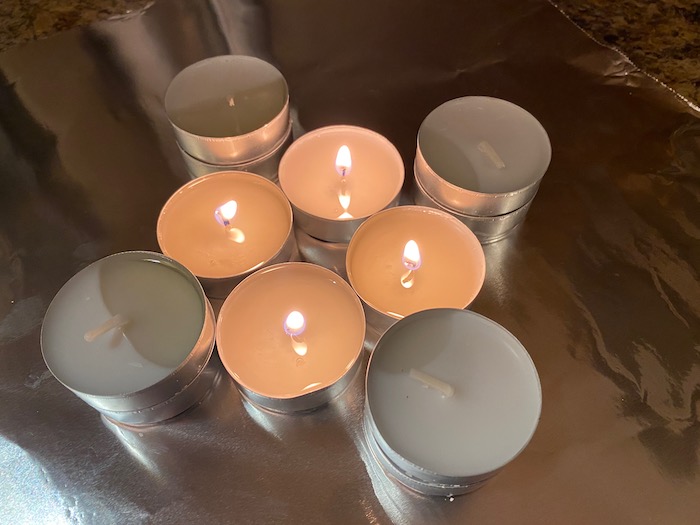
Candle wax can get too hot
A potential problem is creating so much concentrated heat underneath the pot that the candle wax itself ignites.
Most candles are made of a substance called paraffin, which is a byproduct of petroleum distillation. While there are some health concerns about soot produced by paraffin candles, it’s a mostly safe substance, used not just in candles, but for preserving food, lubricating machines and bullets, waxing surfboards, making crayons, and it’s even an ingredient in some chewing gums.
Paraffin is mostly safe, assuming it doesn’t get too hot and reach its flash point — the temperature at which its vapors can ignite.
The flash point of paraffin is around 400°F (204°C). You’ll never get close to that temperature from a single candle. But if you put several candles together and cover them with an insulator like a teapot, they could easily get that hot.
This isn’t just theoretical. Miles Weston set his boat on fire after the paraffin in his terracotta heater ignited:
Miles made a video a few years later to demonstrate how paraffin ignites:
https://www.youtube.com/watch?v=xX28ICxi1s8
The London Fire Brigade warned about these types of heaters in 2013. Fire investigator Charles Pugsley said:
This heating system is unsafe. As a fire investigator, I see dozens of fires every year, including fatal fires, that are caused by people using alternative forms of heating and lighting, most of which include a naked flame. Candles and tealights can be extremely dangerous – a small gust of wind can cause an innocent candle flame to set light to objects nearby if left too close.
As the late author Terry Pratchett said, “Build a man a fire, and he’ll be warm for a day. Set a man on fire, and he’ll be warm for the rest of his life.”
Making a safer tealight heater
We decided to modify the terracotta heater design to make it safer. This time, we set the pot on fire bricks, used an oven thermometer to measure the pot’s internal temperature, and set a stainless water cup on top of the pot to see if it could boil water.
We set up a pot with a single beeswax candle, though we later learned that beeswax has a similar flashpoint to paraffin, so that change wouldn’t help. However, we assumed a single candle wouldn’t get close to the flashpoint temperature. Beeswax also doesn’t put out as much soot and other nastiness as a paraffin candle does, so you can breathe a bit easier when burning one in an enclosed space.
The outside of the pot started at 62.8°F. After 30 minutes, the outside of the pot was 115.3°F, the inside was 90°F, and the water on top was 87°F. After an hour, the outside was 126.7°F, the inside was 101°F, and the water was only 97.2°F.
Not hot enough to boil water. But could it heat up a bathroom? The Inuits would heat an igloo with a wick floating in fat, so it seemed reasonable that it could work. We opened a window to drop the bathroom temperature to 41°F, and then placed the heater inside the bathroom for one hour. The temperature never increased.
We set up the heater on an exterior deck and draped a tarp over the heater and one adult. Despite being 32°F outside, the inside of the tarp quickly rose to 60°F (16°C). The SAS Survival Handbook cites a temperature increase of only four degrees when burning a candle inside a 13.5-foot diameter igloo, so that’s pretty impressive.
In a desperate enough situation, you could use this technique indoors to keep yourself alive. Did you ever make a fort as a kid? Drape a tarp or some other covering over a couple of chairs, and set up a heater.
How could you adapt this to a tent? You probably don’t want to carry a terracotta pot in the field, but a bare candle could suffice. If you have enough room on the floor, you could burn a candle in a metal tin, though there would be a risk you would knock over the candle. A safer alternative would be to hang something like the UCO Candle Lantern from the top of the tent. In fact, that’s one of the usage suggestions UCO makes.
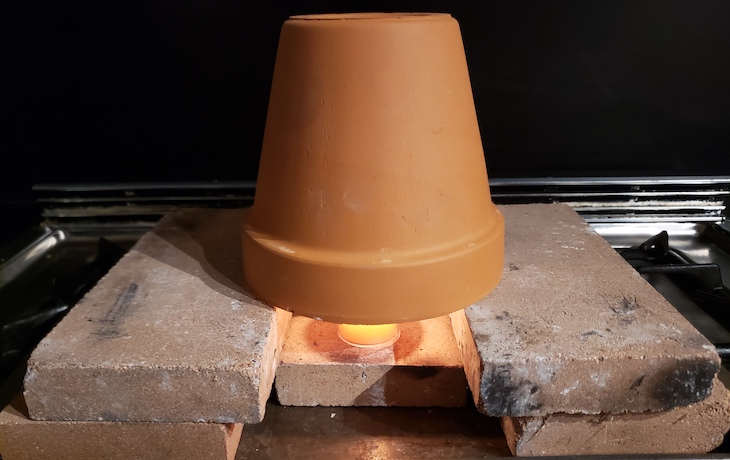
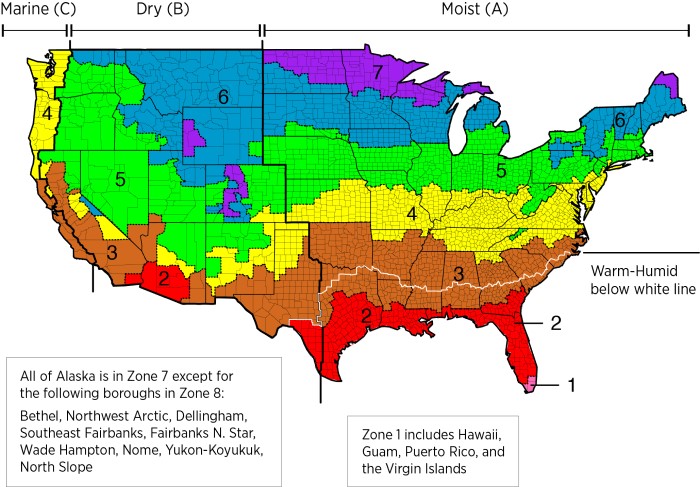
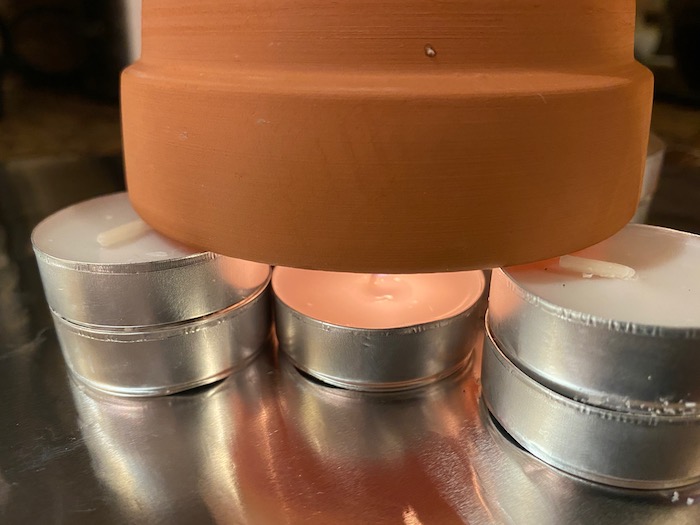
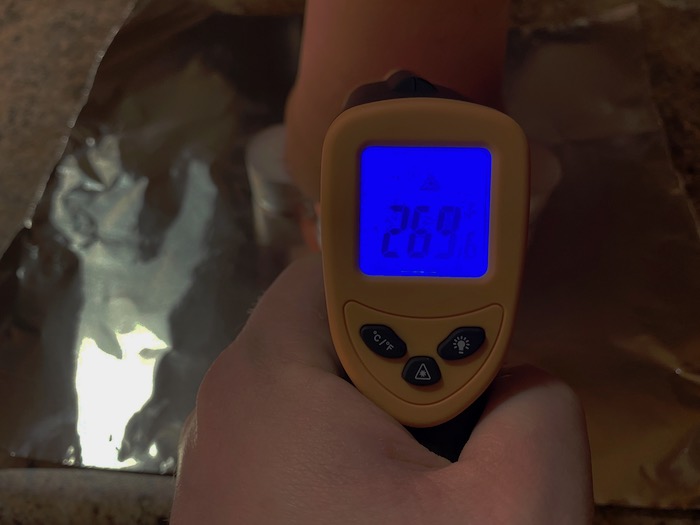
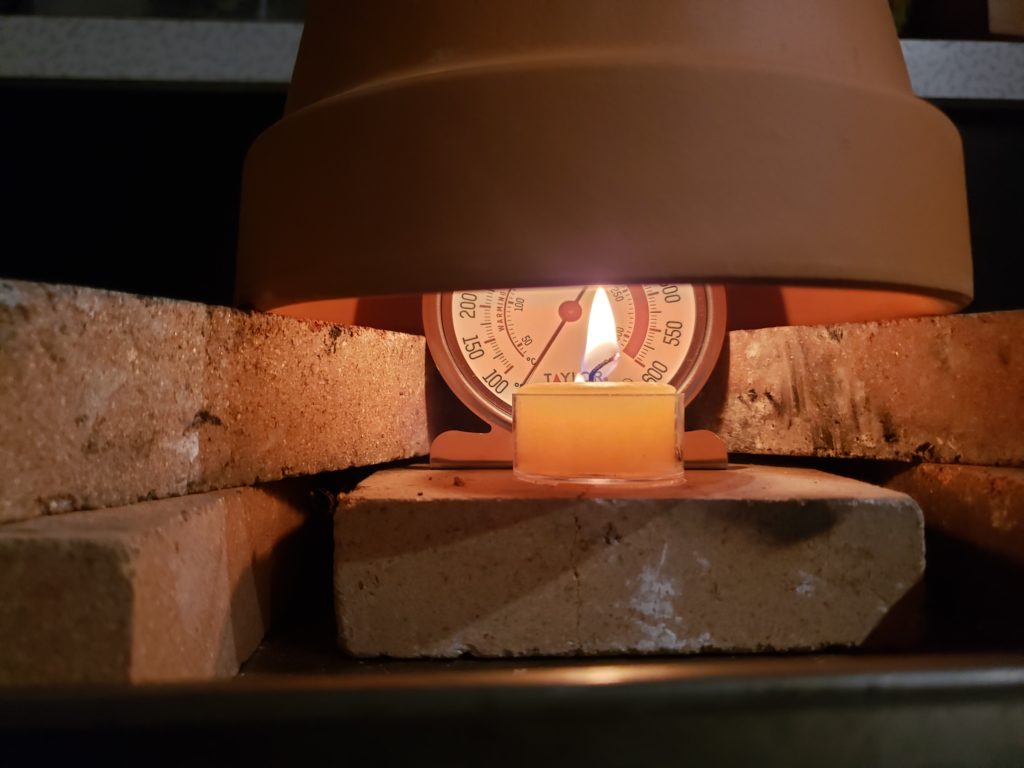
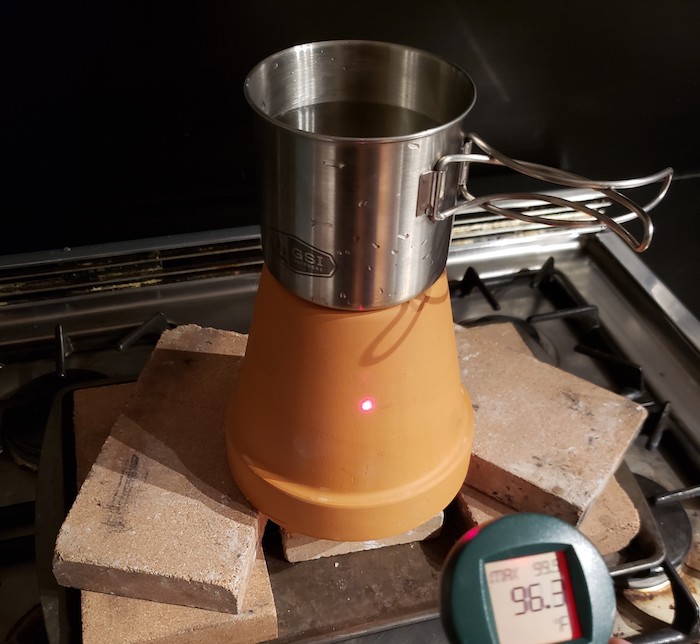
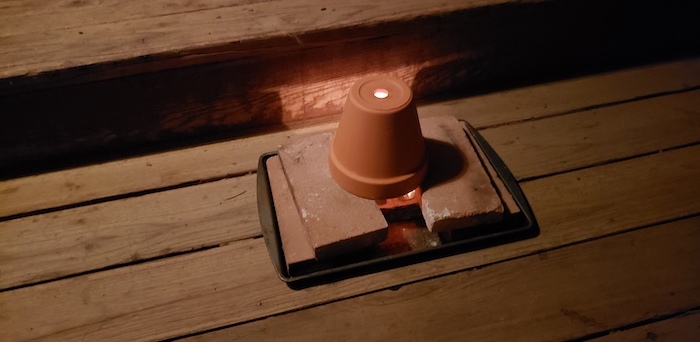
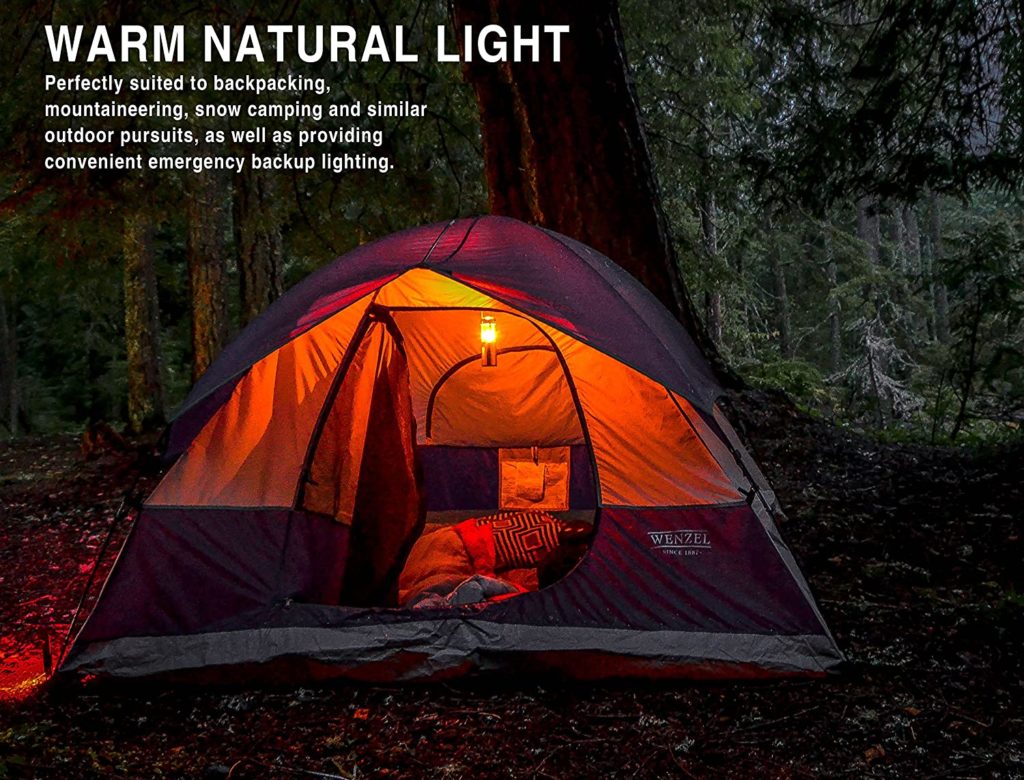
You are reporting the comment """ by on